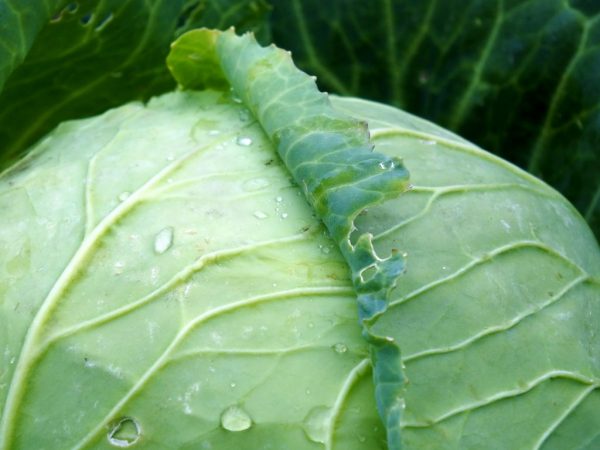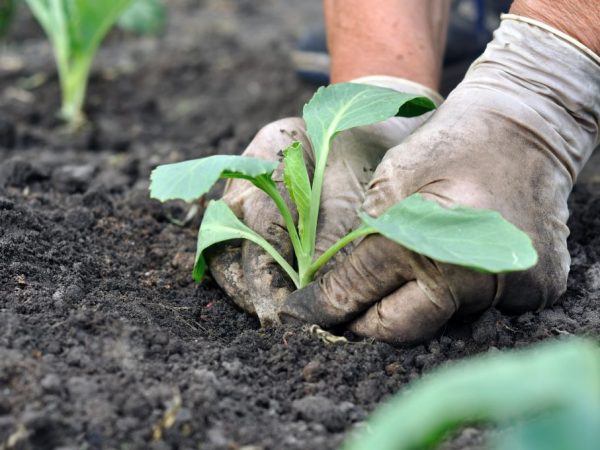Description of cabbage Brigadier
Brigadier cabbage is one of the most common varieties of the crop today. Its main advantage is its hybrid characteristics. The cultivation of the variety is possible even in the cold regions of the country without the danger of pests and diseases.

Description of cabbage Brigadier
Characteristic
White cabbage of the Brigadir variety was bred in France at the beginning of the 20th century. The development was carried out by the Clause company.
Brigadier f1 cabbage can be grown even in the northern regions of the country and in the regions of the Caucasus.
The f1 category foreman is characterized by early maturation. The growing season lasts for 100 days from the moment the first shoots appear.
Description of the plant
The leaves are collected in a horizontal plane, forming a large head.
The leaves are large, covered with small bubbles. They are characterized by a green color with a shade of blue. The surface of the leaf of the Bogatyr grade f1 is covered with a small layer of wax.
Description of the fetus
The head of cabbage is round, dense. The average weight of the fetus is about 4 kg. In some cases, there are fruits weighing more than 6 kg. The inside of the head is white.
The yield of this variety is high: up to 700 kg are harvested from 1 hectare. Fruits of this type are universal species. They can be used to prepare both first and second courses. You can store white cabbage for 3-5 months.
Features of growing crops
According to the description of the Brigadir cabbage variety, planting should be carried out only by the seedling method. You should worry in advance about the correct planting of seeds.
Disinfection of seeds
Cabbage seeds Brigadier must go through all stages of disinfection. It is recommended to use the drug "Epin". The seeds are soaked in it for 2-3 hours, after which they are thoroughly washed under cold running water.
Seeds are planted in early March in common containers. As soon as 2 pairs of main leaves appear on the seedlings, the plant is picked. It is better to use peat containers for this.
Disembarkation

Keep a distance when planting
In early April, when the seedlings reach the desired size (15-20 cm), you can plant in open ground or in a greenhouse. It is important that the soil warms up to a temperature of 14-16 ° C. When planting, you should adhere to the 40 x 40 cm scheme.
Care rules
Brigadier cabbage needs standard care methods. You should pay attention to watering: it is carried out once a week. As soon as the air temperature rises above 24 ° C, the beds are watered every 3 days. Moisturizing plants should not be abundant, so as not to lead to rotting of the roots.
Basic feeding rules:
- The first feeding is carried out 10 days after planting the seedlings. It is advisable to use organic fertilizers (humus or compost). About 400 g of organic matter is added to each bush.
- The second feeding, using phosphorus, is carried out at the stage of the formation of the first inflorescences. This allows the fruit to become denser.
- The third feeding, during which saltpeter is used, is carried out during the fruiting period. This allows the fruit to become more weighty and increase yields.
Do not forget about regular loosening of the soil and removing weeds: this significantly reduces the risk of parasites.
Disease and pest control
First generation hybrid varieties are more resistant to parasites and diseases than conventional varieties. This greatly simplifies the care of crops. In order not to face parasites and diseases, preventive measures are taken.
Every 3 days, weeds are removed and the soil is loosened after each watering. This provides protection against root rot and flea beetles. If spraying with Oxyhom solution is carried out once a week, you can protect the culture from aphids and beetles.
Conclusion
The type of cabbage Brigadier of category F1 is especially popular among gardeners due to its resistance to diseases and pests, unpretentious care and high yield. Timely care of the crop improves its taste and resistance to adverse conditions.

